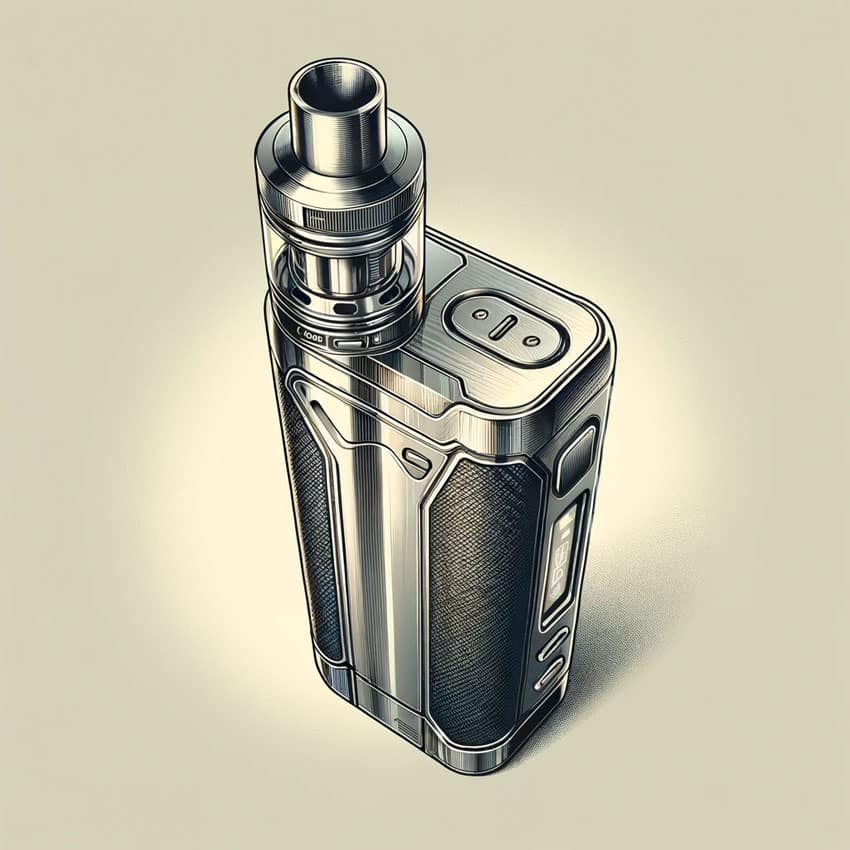Vaping has become increasingly popular in recent years, with many turning to it as an alternative to smoking. However, there are concerns about the potential health effects of vaping, including its impact on skin health.
One of the most common concerns is whether vaping can cause acne.
The Connection Between Vaping and Acne
Vaping is a popular alternative to smoking cigarettes that has been gaining momentum in recent years. However, there is growing concern about the potential link between vaping and acne.
In this section, we will explore the connection between vaping and acne and the effects of nicotine on the skin.
Effects of Nicotine on Skin
Nicotine is a highly addictive substance found in tobacco products, including e-cigarettes. When nicotine is absorbed into the body, it can cause a variety of effects on the skin.
Nicotine can lead to decreased blood flow to the skin, which can cause the skin to become dry and dull. Additionally, nicotine can cause the skin to lose its elasticity, which can lead to wrinkles and fine lines.

Role of Oil and Chemicals in Vaping
Vaping involves inhaling a vapor that is created by heating a liquid that contains various chemicals and oils. These chemicals and oils can have a variety of effects on the skin.
Propylene glycol, which is commonly found in e-cigarettes, can cause the skin to become dry and irritated. This can lead to the overproduction of sebum, which can clog pores and cause breakouts.
Additionally, the chemicals found in e-cigarettes can slow down the healing process of the skin, which can lead to acne scars.
Comparing Vaping and Smoking
Vaping vs. Smoking Cigarettes
Vaping and smoking cigarettes are two different ways of consuming nicotine. Smoking cigarettes is a traditional method that has been around for centuries, while vaping is a relatively new alternative.
Vaping involves inhaling vapor from an e-cigarette while smoking cigarettes involves inhaling smoke from burning tobacco.
One of the main differences between the two is the way they are produced. Cigarettes contain tobacco, which is a highly addictive substance that contains many harmful chemicals. E-cigarettes, on the other hand, do not contain tobacco. Instead, they use a liquid that is heated to create a vapor that the user inhales.
Another difference is the way they are used. Smoking cigarettes involves lighting a cigarette and inhaling the smoke, while vaping involves using an electronic device to heat the liquid and inhale the vapor.

Health Risks of E-cigarettes
While e-cigarettes are often marketed as a safer alternative to smoking cigarettes, they still pose health risks.
The liquid used in e-cigarettes contains nicotine, which is highly addictive and can cause a number of health problems. Nicotine can also affect the brain development of adolescents and young adults.
In addition to nicotine, e-cigarettes also contain other harmful chemicals such as formaldehyde and acetaldehyde. These chemicals can cause respiratory problems and other health issues.
While e-cigarettes may be a less harmful alternative to smoking cigarettes, they are not without risks. It is important for individuals to consider the potential health risks before using e-cigarettes as an alternative to smoking tobacco cigarettes.
Potential Side Effects of Vaping
Vaping is often marketed as a safer alternative to smoking, but it is not without its potential side effects. Here are some of the most common physical side effects associated with vaping:
Physical Side Effects
- Dehydration: Vaping can cause dehydration, which can lead to dry skin, dry mouth, and other related issues.
- Nausea and vomiting: Some people may experience nausea and vomiting when they first start vaping, especially if they are using high-nicotine e-liquids.
- Coughing: Vaping can cause coughing, especially in people who are new to vaping or who are using high-nicotine e-liquids.
- Headaches and chest pain: Some people may experience headaches and chest pain when they vape, especially if they are using high-nicotine e-liquids.
- High blood pressure: Vaping can cause a temporary increase in blood pressure, which can be dangerous for people with pre-existing high blood pressure or heart conditions.

Long-Term Health Consequences
While the long-term health consequences of vaping are still being studied, there is evidence to suggest that vaping can cause lung damage, brain damage, and a weakened immune system. Here are some of the potential long-term health consequences of vaping:
- Lung damage: Vaping can cause inflammation and damage to the lungs, which can lead to a variety of respiratory problems, including chronic bronchitis and emphysema.
- Brain damage: Nicotine, which is present in many e-liquids, can cause damage to the brain, especially in young people whose brains are still developing.
- Weakened immune system: Vaping can weaken the immune system, making it harder for the body to fight off infections and illnesses.
Vaping and Skin Health
Vaping has become increasingly popular in recent years as an alternative to smoking cigarettes. However, there is growing concern about the potential impact of vaping on skin health. In this section, we will explore the effects of vaping on skin health and the potential risks associated with it.
Impact on Skin’s Elasticity and Aging
One of the primary concerns regarding vaping and skin health is the impact on skin’s elasticity and aging.
Nicotine, which is present in most e-cigarettes, is known to constrict blood vessels, reducing blood flow to the skin. This can result in a loss of elasticity, leading to premature aging, fine lines, and wrinkles.
In addition, vaping can cause oxidative stress, which can damage collagen in the skin. Collagen is a protein that provides structure and elasticity to the skin. Damage to collagen can lead to a loss of elasticity, making the skin more prone to wrinkles and sagging.

Vaping and Skin Concerns
Vaping has also been linked to various skin concerns, including acne, rosacea, skin rashes, and scarring. While the exact mechanisms are not fully understood, it is believed that vaping can disrupt the skin’s microbiome, leading to an overgrowth of bacteria that can cause these skin conditions.
Furthermore, vaping can cause dehydration, which can lead to dry, flaky skin and lip swelling. Dehydration can also exacerbate existing skin conditions, such as eczema and psoriasis.
It is also important to note that vaping has been linked to an increased risk of skin cancer. While the exact mechanisms are not fully understood, it is believed that the chemicals present in e-cigarettes can damage DNA, increasing the risk of cancer.
Regulation and Safety of Vaping
FDA’s Stance on Vaping
The FDA has been regulating e-cigarettes since 2016, and their stance is that e-cigarettes are not safe for use.
The FDA has found harmful chemicals in e-cigarette aerosol, including nicotine, heavy metals like lead and nickel, and harmful chemicals like diacetyl. The FDA has also found that e-cigarette aerosol can harm the lungs and that the aerosol can contain carcinogens and other harmful chemicals.
Are E-cigarettes Safer?
While some people believe that e-cigarettes are safer than traditional cigarettes, there is still much debate about their safety.
E-cigarettes contain harmful chemicals like propylene glycol and vegetable glycerin, which can harm the elastin in the skin and cause pores to become clogged.
E-cigarettes also contain nicotine, which is highly addictive and can cause a variety of side effects, including increased heart rate, high blood pressure, and nicotine addiction.

